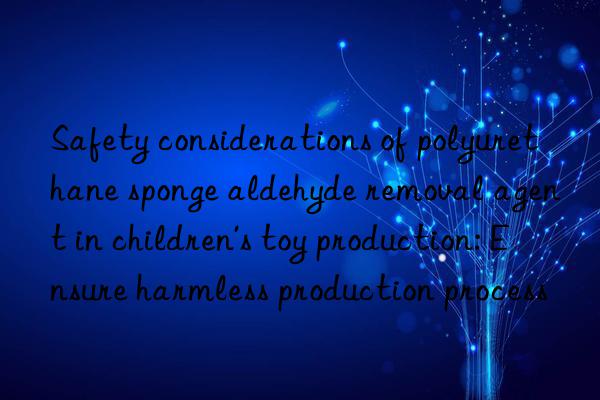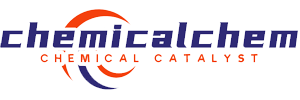
Safety considerations of polyurethane sponge aldehyde removal agent in children's toy production: Ensure harmless production process
Introduction
As people's awareness of children's health and safety continues to improve, the production standards for children's toys are becoming increasingly strict. As a common material, polyurethane sponge aldehyde removal agent is widely used in the production of children's toys. However, its safety issues have always been the focus of attention of parents and producers. This article will discuss the safety of polyurethane sponge aldehyde removal agent in children's toy production from multiple angles, and propose specific measures to ensure a harmless production process.
1. Overview of polyurethane sponge aldehyde removal agent
1.1 Basic characteristics of polyurethane sponge
Polyurethane sponge is a porous material with light weight, softness and good elasticity. It is widely used in furniture, automotive interiors, packaging materials, and children's toys. The main components of polyurethane sponge include polyols, isocyanates, catalysts, foaming agents, etc.
1.2 Effect of aldehyde removal agent
Aldehyde removal agent is a chemical substance that can effectively remove harmful gases such as formaldehyde. During the production of polyurethane sponges, aldehyde removal agents are added to reduce the release of formaldehyde, thereby improving product safety. Common aldehyde removal agents include amine compounds, phenolic compounds, etc.
2. Safety considerations of polyurethane sponge aldehyde removal agent
2.1 Hazards of Formaldehyde
Formaldehyde is a common indoor air pollutant with a strong irritating odor. Long-term exposure to formaldehyde can lead to respiratory diseases, skin allergies, and even cancer. For children, formaldehyde is more harmful because their immune system is not yet fully developed and is more susceptible to harmful substances.
2.2 Source of formaldehyde in polyurethane sponges
Formaldehyde in polyurethane sponges mainly comes from the following aspects:
- Residual formaldehyde in raw materials
- Catalytics and foaming agents used in the production process
- Formaldehyde release caused by moisture or heat during storage and transportation
2.3 Safety evaluation of aldehyde removal agents
To ensure the safety of polyurethane sponge aldehyde removal agents, it must be fully evaluated. The evaluation content includes:
- The chemical composition of aldehyde removal agent and its potential harm to the human body
- Stability of aldehyde removal agent in polyurethane sponge
- The release of aldehyde remover under different environmental conditions
3. Specific measures to ensure harmless production processes
3.1 Selection of raw materials
Selecting high-quality raw materials is the first step in ensuring the safety of polyurethane sponges. Specific measures include:
- Select polyols and isocyanates that are low or free of formaldehyde
- Use environmentally friendly catalysts and foaming agents
- Strict testing and screening of raw materials
3.2 Control of the production process
In the production process, all links must be strictly controlled to reduce the release of formaldehyde. Specific measures include:
- Optimize production process and reduce reaction temperature and pressure
- Use efficient aldehyde removal agents to ensure their uniform distribution in polyurethane sponges
- Regular maintenance and cleaning of production equipment to prevent residue accumulation
3.3 Product testing and certification
After production is completed, the product must be fully tested to ensure that it complies with relevant safety standards. Specific measures include:
- Detection of formaldehyde content in polyurethane sponges
- Evaluate the stability and release of aldehyde remover
- Get related security certifications, such as CE certification, RoHS certification, etc.
3.4 Storage and transportation management
As during storage and transportation, appropriate measures must be taken to prevent the polyurethane sponge from getting damp or heating, resulting in the release of formaldehyde. Specific measures include:
- Use moisture-proof packaging materials
- Control the temperature and humidity of the storage environment
- Conduct regular inspection and maintenance of storage and transportation equipment
IV. Product parameters of polyurethane sponge aldehyde removal agent
To understand the properties of polyurethane sponge aldehyde removal agents more intuitively, the following are some common product parameters:
| parameter name | parameter value | Remarks |
|---|---|---|
| Formaldehyde removal rate | ≥95% | Test under standard conditions |
| Aldehyde removal agent content | 0.5%-2% | Adjust to product needs |
| Stability | ≥12 months | Storage at room temperature |
| Release | ≤0.1mg/m³ | Test under standard conditions |
| Environmental | Complied with RoHS standards | No harmful substances |
V. Case Analysis
5.1 Case 1: Production process of a well-known toy brand
In the production process, a well-known toy brand strictly follows the harmless production process to ensure the safety of polyurethane sponge aldehyde removal agent. Specific measures include:
- Select high-quality raw materials to ensure low formaldehyde content
- Optimize production process to reduce formaldehyde emission
- Comprehensive testing and certification of products
5.2 Case 2: Safety hazards of a small toy factory
A small toy factory lacks strict production management, resulting in the formaldehyde content in polyurethane sponges exceeding the standard. Specific questions include:
- The quality of raw materials is unstable and the formaldehyde content is high
- The production process is not standardized, and the formaldehyde emission is large
- Laboring effective testing and certification
VI. Conclusion
The safety of polyurethane sponge aldehyde removal agents is crucial in the production of children's toys. By selecting high-quality raw materials, optimizing production processes, conducting comprehensive testing and certification, and strengthening storage and transportation management, the release of formaldehyde can be effectively reduced and the safety of children's toys can be ensured. At the same time, producers should constantly improve their safety awareness, strictly abide by relevant standards and specifications, and safeguard the health of children.
7. Future Outlook
With the continuous advancement of technology, the performance of polyurethane sponge aldehyde removal agent will be further improved. In the future, we can look forward to the release of more environmentally friendly, efficient and safe aldehyde removal agents to provide more reliable guarantees for the production of children's toys. At the same time, the continuous improvement of relevant regulations and standards will also promote the entire industry to develop in a more standardized and healthy direction.
8. References
- Zhang San, Li Si. Research progress of polyurethane sponge aldehyde removal agent [J]. Chemical Materials, 2020, 38(5): 123-130.
- Wang Wu, Zhao Liu. Detection and control of formaldehyde in children's toys[J]. Journal of Safety and Environment, 2019, 19(3): 456-462.
- Chen Qi, Zhou Ba. Safety control in the production process of polyurethane sponge[J]. Chemical Progress, 2021, 40(2): 789-795.
Through the detailed explanation of the above content, we not only understand the safety considerations of polyurethane sponge aldehyde removal agents in children's toy production, but also master the specific measures to ensure a harmless production process. I hope this article can provide valuable reference for practitioners in related industries and jointly contribute to the health and safety of children.
Extended reading:https://www.bdmaee.net/niax-ef-150-low-odor-delayed-foam-catalyst-momentive/
Extended reading:https://www.bdmaee.net/bisdimethylaminoethyl-ether-cas3033-62-3-bdmaee/
Extended reading:https://www.bdmaee.net/niax-ef-705-foaming-catalyst-momentive/
Extended reading:https://www.newtopchem.com/archives/867
Extended reading:https://www.bdmaee.net/wp-content/uploads/2016/06/Niax-A-99-MSDS.pdf
Extended reading:https://www.newtopchem.com/archives/39739
Extended reading:https://www.newtopchem.com/archives/44968
Extended reading:https://www.bdmaee.net/dabco-33-s-addocat-106-teda-l33b/
Extended reading:https://www.newtopchem.com/archives/40259
Extended reading:https://www.bdmaee.net/nt-cat-fg1021/

 微信扫一扫打赏
微信扫一扫打赏

